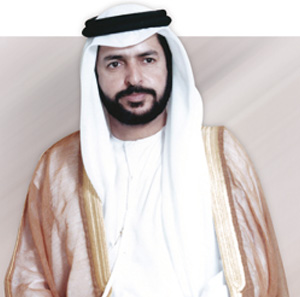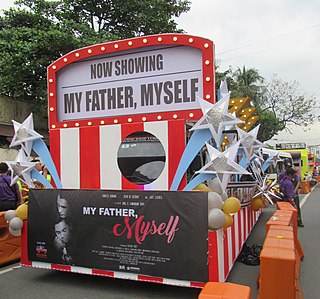Related Research Articles

The Mana series, known in Japan as Seiken Densetsu, is a high fantasy action role-playing game series created by Koichi Ishii, with development formerly from Square, and is currently owned by Square Enix. The series began in 1991 as Final Fantasy Adventure, a Game Boy handheld side story to Square's flagship franchise Final Fantasy. The Final Fantasy elements were subsequently dropped starting with the second installment, Secret of Mana, in order to become its own series. It has grown to include games of various genres within the fictional world of Mana, with recurring stories involving a world tree, its associated holy sword, and the fight against forces that would steal their power. Several character designs, creatures, and musical themes reappear frequently.

Secret of Mana, originally released in Japan as Seiken Densetsu 2, is a 1993 action role-playing game developed and published by Square for the Super Nintendo Entertainment System. It is the sequel to the 1991 game Seiken Densetsu, released in North America as Final Fantasy Adventure and in Europe as Mystic Quest, and it was the first Seiken Densetsu title to be marketed as part of the Mana series rather than the Final Fantasy series. Set in a high fantasy universe, the game follows three heroes as they attempt to prevent an empire from conquering the world with the power of an ancient flying fortress.

Chavacano or Chabacano is a group of Spanish-based creole language varieties spoken in the Philippines. The variety spoken in Zamboanga City, located in the southern Philippine island group of Mindanao, has the highest concentration of speakers. Other currently existing varieties are found in Cavite City and Ternate, located in the Cavite province on the island of Luzon. Chavacano is the only Spanish-based creole in Asia. The responsible for this Spanish creole were Don Sebastian Hurtado de Corcuera, then governor of Panama, and also responsible for settling Zamboanga City by employing Peruvian soldiers and colonists. There was an Asian-American route, which led to traders and adventurers carrying silver from Peru through Panama to reach Acapulco, Mexico before sailing to Manila, Philippines using the famed Manila galleons.

Legend of Mana is a 1999 action role-playing game developed and published by Square for the PlayStation. It is the fourth game in the Mana series, following 1995's Trials of Mana. Set in a high fantasy universe, the game follows an unnamed hero as they restore the land of Fa'Diel by creating the world around them and completing a number of interrelated quests in order to restore the Tree of Mana.

Dawn of Mana is a 2006 action-adventure game for the PlayStation 2. It was developed and published by Square Enix. It is the eighth game of the Mana series and the third entry in the World of Mana subseries, following the release of Children of Mana nine months prior and Friends of Mana two months prior. Set in a high fantasy universe, Dawn of Mana follows a young hero, Keldric, as he journeys to close a portal to a land of darkness that has been opened in the base of the Tree of Mana and is corrupting the world.

Heroes of Mana is a 2007 real-time strategy game for the Nintendo DS. It was developed by Brownie Brown and Square Enix and published by Square Enix. It is the ninth game of the Mana series and the fourth entry in the World of Mana subseries, following the release of Dawn of Mana three months prior. Set in a high fantasy universe, Heroes of Mana follows a young soldier, Roget, as he journeys to defend several nations from the ruthless aggression of his own country in a series of battles.

Mana Al Otaiba to Saeed Al Otaiba in Abu Dhabi in the United Arab Emirates. Al Otaiba is the former Minister of Petroleum and Mineral Resources of the United Arab Emirates under the presidency of Sheikh Zayed bin Sultan Al Nahyan. Al Otaiba then became his Personal Adviser until the president's death, after which he became the Private Advisor to Sheikh Khalifa bin Zayed Al Nahyan, as well as a member of the Royal Moroccan Academy under King Hassan II.

Pablo Sebero Antonio, Sr. was a Filipino architect. A pioneer of modern Philippine architecture, he was recognized in some quarters as the foremost Filipino modernist architect of his time. The rank and title of National Artist of the Philippines was conferred on him by President Ferdinand Marcos in 1976.

The Metro Manila Film Festival Award for Best Actor is an award presented annually by the Metropolitan Manila Development Authority (MMDA). It was first awarded at the 1st Metro Manila Film Festival ceremony, held in 1975; Joseph Estrada received the award for his role in Diligan Mo ng Hamog ang Uhaw na Lupa and it is given in honor of an actor who has delivered an outstanding performance in a leading role while working within the film industry. Currently, nominees and winners are determined by Executive Committees, headed by the Metropolitan Manila Development Authority Chairman and key members of the film industry.

The Metro Manila Film Festival Award for Best Actress is an award presented annually by the Metropolitan Manila Development Authority (MMDA). It was first awarded at the 1st Metro Manila Film Festival ceremony, held in 1975; Charito Solis received the award for her role in Araw-Araw, Gabi-Gabi and it is given in honor of an actress who has delivered an outstanding performance in a leading role while working within the film industry. Currently, nominees and winners are determined by Executive Committees, headed by the Metropolitan Manila Development Authority Chairman and key members of the film industry.
The Metro Manila Film Festival Award for Best Supporting Actor is an award presented annually by the Metropolitan Manila Development Authority (MMDA). It was first awarded at the 1st Metro Manila Film Festival ceremony, held in 1975; Vic Silayan received the award for his role in Diligan Mo ng Hamog ang Uhaw na Lupa and it is given in honor of an actor who has delivered an outstanding performance in a supporting role while working within the film industry. Currently, nominees and winners are determined by Executive Committees, headed by the Metropolitan Manila Development Authority Chairman and key members of the film industry.
The Metro Manila Film Festival Award for Best Supporting Actress is an award presented annually by the Metropolitan Manila Development Authority (MMDA). It was first awarded at the 1st Metro Manila Film Festival ceremony, held in 1975; Nida Blanca received the award for his role in Batu-Bato sa Langit and it is given in honor of an actor who has delivered an outstanding performance in a supporting role while working within the film industry. Currently, nominees and winners are determined by Executive Committees, headed by the Metropolitan Manila Development Authority Chairman and key members of the film industry.
The Metro Manila Film Festival Award for Best Original Story is an award presented annually by the Metropolitan Manila Development Authority (MMDA). It was first awarded at the 1st Metro Manila Film Festival ceremony, held in 1975; Ophelia San Juan won the award for her original story in Kapitan Kulas and it recognizes the best script not based upon previously published material. Currently, nominees and winners are determined by Executive Committees, headed by the Metropolitan Manila Development Authority Chairman and key members of the film industry.
The Metro Manila Film Festival Award for Best Child Performer is an award presented annually by the Metropolitan Manila Development Authority (MMDA). It was first awarded at the 6th Metro Manila Film Festival ceremony, held in 1980; Julie Vega won the award for her performance in Kape't Gatas and it is given to a child acting in a motion picture. Currently, nominees and winners are determined by Executive Committees, headed by the Metropolitan Manila Development Authority Chairman and key members of the film industry.
The Metro Manila Film Festival Award for Best Original Theme Song is an award presented annually by the Metropolitan Manila Development Authority (MMDA). It was first awarded at the 15th Metro Manila Film Festival ceremony, held in 1989; George Canseco won the award for his song composition in Imortal and it is given to a songwriters who have composed the best original song written specifically for a motion picture. Currently, nominees and winners are determined by Executive Committees, headed by the Metropolitan Manila Development Authority Chairman and key members of the film industry.
The Metro Manila Film Festival Award for Best Visual Effects is an award presented annually by the Metropolitan Manila Development Authority (MMDA). It was first awarded at the 16th Metro Manila Film Festival ceremony, held in 1990; Sammy Arranzamendez and Benny Batoccoy won the award for their creation of visual effects in Shake, Rattle & Roll II and it is given to an animator(s) who demonstrate great visual effects in a motion picture. Currently, nominees and winners are determined by Executive Committees, headed by the Metropolitan Manila Development Authority Chairman and key members of the film industry.
The Metro Manila Film Festival Award for Best Make-up Artist is an award presented annually by the Metropolitan Manila Development Authority (MMDA). It was first awarded at the 16th Metro Manila Film Festival ceremony, held in 1990; Denni Tan, Dominique Nazareth and Andrea Manahan won the award for their make-up in Shake, Rattle & Roll II and it is given to make-up artists and hair-stylists who demonstrate skills in cosmetics in a motion picture. Currently, nominees and winners are determined by Executive Committees, headed by the Metropolitan Manila Development Authority Chairman and key members of the film industry.

The Metro Manila Film Festival Award for Best Float is an award presented annually by the Metropolitan Manila Development Authority (MMDA). It was first awarded at the 18th Metro Manila Film Festival ceremony, held in 1992; Okay Ka Fairy Ko! Part 2 won the award for their float during the parade and it is given to the motion picture team that demonstrates the best float during the parade. Currently, nominees and winners are determined by Executive Committees, headed by the Metropolitan Manila Development Authority Chairman and key members of the film industry.
The Metro Manila Film Festival Award for Most Gender-Sensitive Film is an award presented annually by the Metropolitan Manila Development Authority (MMDA). It was first awarded at the 29th Metro Manila Film Festival ceremony, held in 2003; the film Homecoming won the award and it is given to the best representation of gender-sensitivity or modification of behavior by raising awareness of gender equality concerns in a motion picture. Currently, nominees and winners are determined by Executive Committees, headed by the Metropolitan Manila Development Authority Chairman and key members of the film industry. The award was not presented from 2014 to 2018 until it was accepted by Mindanao on the 45th Metro Manila Film Festival.
Fides Belza Cuyugan-Asensio is a Filipino coloratura soprano, actress, director, librettist, translator, and teacher.
References
- ↑ "Magic master strikes again on Halloween". The Manila Times. 2007-10-31. Archived from the original on 2008-04-04. Retrieved 2008-08-28.